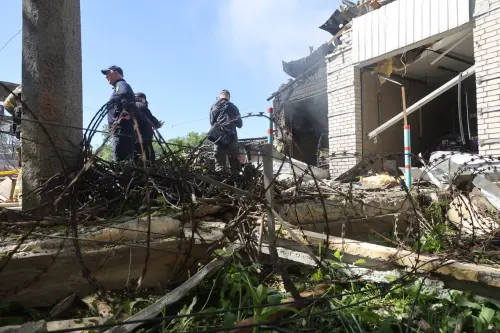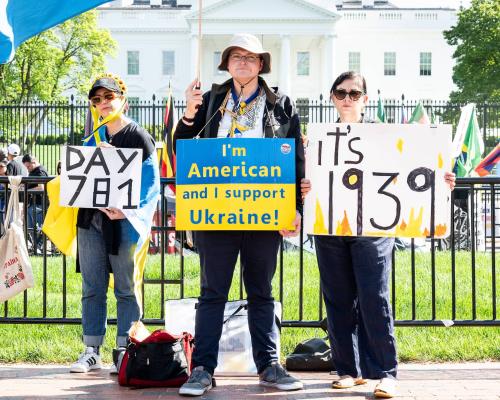In recent weeks, the ongoing military strain of deployments to Iraq and Afghanistan combined with Internet-based gossip has led to growing concern that the next president—whoever he might be—may reinstate the military draft for the first time since the Vietnam War. It didn’t help that Rock the Vote, a generally liberal organization dedicated to increasing the vote among young people, sent out fake draft notices last month to 640,000 e-mail addresses.
But is it a real possibility? On the face of it, the resuscitation of the draft doesn’t seem out of the question. Virtually all of the Army’s active-duty combat brigades and most of its Marine units were deployed to Iraq or Afghanistan in 2003 or 2004. There is no letup in sight. Nearly half of the country’s deployable ground forces are likely to remain in hostile environments for at least the next couple of years, meaning that most units will experience at least one more rotation abroad in that time. About one-fourth of all ground-force reservists have been mobilized at any given time since 9/11, and about 50,000 are now in Iraq. Certainly it seems reasonable to ask whether the all-volunteer military can sustain that level of commitment.
On the other hand, President Bush and Sen. John F. Kerry have repeatedly opposed returning to the days of military conscription (a subject that is particularly unpalatable at this late date in the presidential campaign).
And almost all policy arguments work against the draft too. Today we have a truly professional military that performs far better than do conscription forces. The typical soldier, Marine, sailor, airman or airwoman today has five or more years of experience, high aptitude, a high school degree and quite possibly some college education, technical skills and a real commitment to the armed forces.
Some Americans make the argument that it is unfair to depend on a volunteer military to fight for the country while the rest of us remain safely at home. Perhaps. But, though we owe an incredible debt of gratitude to our men and women in uniform, they join of their own free will. They also join a military that offers considerable career opportunities and—believe it or not—better overall compensation than most groups of similar age, experience and education earn in the private sector. And although it is tragically unfair that some are indeed killed or seriously wounded in action abroad, there is a randomness and an unfairness to war regardless of who serves.
So what’s the truth? Because enough people continue to join or reenlist in the military, unless we wind up in yet another war the draft will remain clearly unnecessary in the near future, regardless of who wins Nov. 2. That said, a draft is not totally out of the question in the years ahead. It is unlikely, but hardly inconceivable. The reason is simple. Under some circumstances, we might have no choice. In particular, if ongoing overseas operations remain so onerous for the volunteer force, people could start leaving the military in droves and the number of those joining could become insufficient to replace them. Alternatively, if another big war breaks out and particularly if it requires a long stabilization mission after major combat ends, today’s military could prove far too small for the job, leaving a draft as the only way to quickly beef it up.
To minimize the chances of a draft, it makes sense to increase the size of today’s armed forces now, before a personnel crisis occurs. We’re already deploying today’s soldiers and Marines at a pace that is unrivaled in the history of the all-volunteer force, at considerable risk to the staying power of that force. Take, for example, the Army’s 3rd Infantry Division, which was critical in overthrowing Saddam Hussein last year—and is now getting ready to redeploy to Iraq this winter. The Marines’ 1st Division, also part of that invasion force, is back in Iraq. Some 50,000 reservists have been involuntarily activated not once but twice since 9/11.
Remarkably, our troops are responding with grit and patriotism to the challenge so far. The data on recruiting and retention show that there is no personnel crisis—at least not yet. But that reality could change as more units deploy to Iraq or Afghanistan for a second or even a third time in the coming months.
So far, Secretary of Defense Donald H. Rumsfeld has resisted any significant expansion in the U.S. ground forces, even though he could have accomplished that expansion using normal recruiting and retention tools (like financial and educational incentives). The problem is, if he changes his mind because of growing personnel shortages, it could be too late to fix the situation because word will have gotten around that the military has become a job to avoid. That’s why it makes sense to add people to the Army and Marine Corps now. Otherwise, the Bush administration’s policies risk creating the need for a draft—not because anyone in the administration prefers it or secretly plans it, but because we may have no choice.
Kerry’s proposal for adding 40,000 soldiers now and his desire to gain as much additional allied help as possible in Iraq make sense. Perhaps there is still time before Nov. 2 for Bush to change his mind and join Kerry in a proposal for a larger military. If he really wants to reassure voters that a second Bush term would not create the need for a draft, that is the best way to do it.



Commentary
Op-edNobody Wants a Draft, but What if We Need One?
October 13, 2004